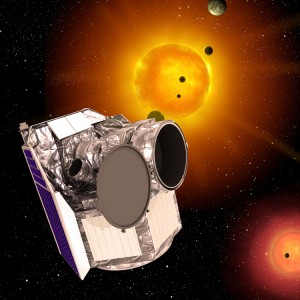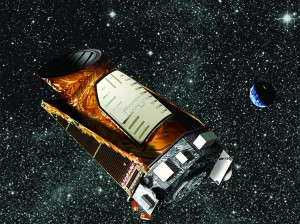Women’s History Month: Katie Bouman
Wednesday, March 15th, 2023

Katie Bouman is known for her work in compiling the first images of an event horizon—the “surface” of a black hole.
Credit: © Caltech
March is Women’s History Month, an annual observance of women’s achievements and contributions to society. This month, Behind the Headlines will feature woman pioneers in a variety of areas.
Women achieve great things around the world every day. However, not many women craft an algorithm to create the first-ever picture of a black hole. American computer scientist Katie Bouman worked on compiling the first images of an event horizon—the “surface” of a black hole. A black hole is a region of space whose gravitational force is so strong that nothing can escape from it. At the event horizon, the pull of gravity becomes so strong that nothing known can escape. Capturing the event horizon was considered an amazing feat of astronomical imaging. Bouman has helped us understand the universe’s greatest mystery.
Katherine Louise Bouman was born May 9, 1989, in West Lafayette, Indiana. While in high school, she volunteered at Purdue University, conducting imaging research. She attended the University of Michigan from 2007 to 2011, where she graduated summa cum laude (with highest distinction) with a bachelor’s degree in electrical engineering. She received her Ph.D. degree in electrical engineering and computer science from the Massachusetts Institute of Technology (MIT) in 2017.
Bouman joined the Event Horizon Telescope (EHT) project in 2013. The EHT is a global network of ground-based telescopes established to produce images of black hole event horizons. At MIT, she worked to develop the mathematical framework used to assemble images of black holes from radio telescope data. She led the development of the Continuous High-Resolution Image Reconstruction using Patch priors (CHIRP) algorithm. An algorithm is a step-by-step mathematical procedure, often carried out by a computer. The CHIRP algorithm takes images of one object from multiple sources and uses computer vision techniques to produce a single sharper image of the object. Computer vision is the use of computers to recognize patterns in images, a major topic in artificial intelligence.
In 2017, radio telescopes participating in the EHT project observed the M87 galaxy. The following year, Bouman headed one of the four EHT teams that used the data gathered to produce possible images of the supermassive black hole astronomers suspected to be at the center of M87, called M87*. Two teams, including Bouman’s, used algorithms similar to CHIRP. Two other teams used an algorithm traditionally used in radio astronomy. The teams then checked their images against one another.
In 2019, EHT released the combined image of M87*. At that time, two photographs of Bouman garnered significant media attention. The first showed her reaction as her team’s results were compiled for the first time. The second showed her posing with the hard drives of data used to compile the image of M87*. This photograph drew comparisons to a 1969 image of the American computer scientist Margaret Hamilton standing next to a stack of volumes containing the printed computer code for the Apollo lunar missions.









